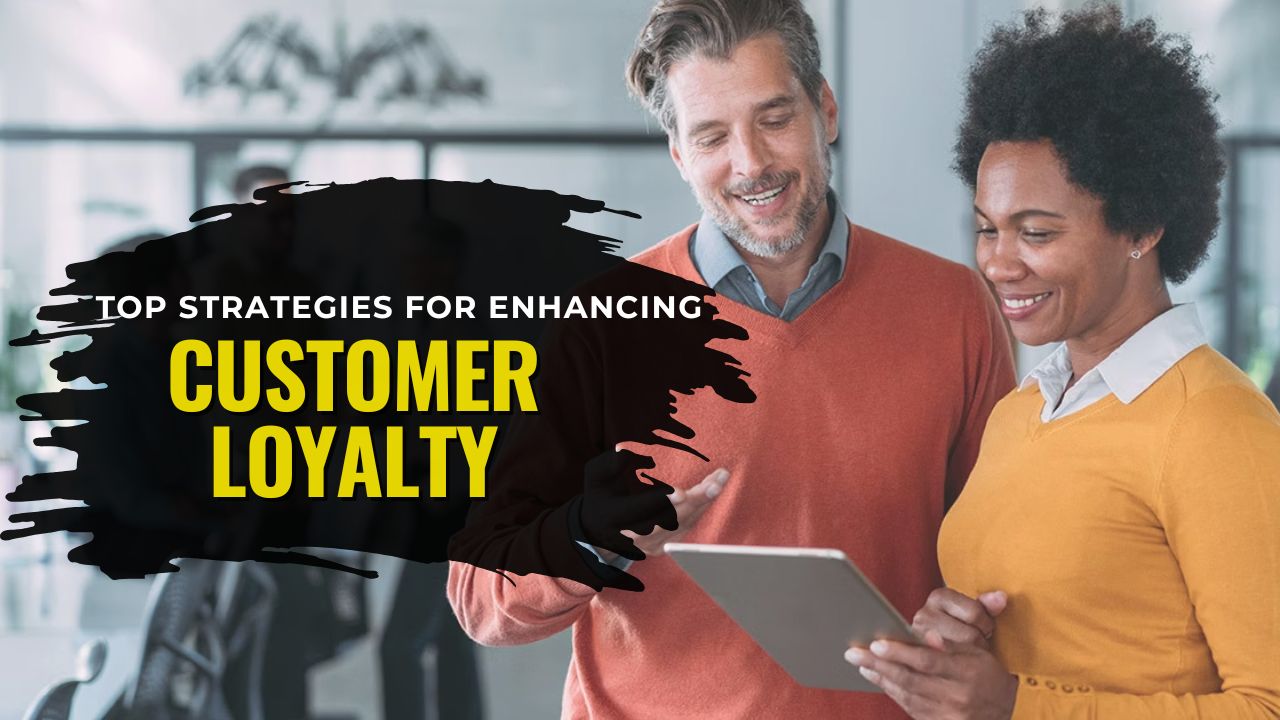In today’s fast-changing marketplace, customer loyalty is not just a nice-to-have — it’s a vital growth engine for small businesses.
Acquiring new customers is expensive; retaining existing ones drastically increases profitability, drives referrals, and boosts lifetime value.
But loyalty in 2025 demands more than punch cards — it requires genuinely valuable rewards, seamless experiences, and emotional connection.
This article outlines a modern, actionable strategy — step by step — to enhance customer loyalty in small businesses.
You’ll find real tactics, leading-edge practices, and a clear implementation roadmap. Let’s dive in.
Create a Value-Driven Loyalty Program
Why a program matters
A well-designed loyalty program acts as a strong incentive for repeat behavior. It shifts consumer mindset from “buy once” to “buy consistently.”
How to design it
- Offer clear, meaningful rewards, such as cashback, tiered discounts, early access, or exclusive experiences.
- Structure tiers so higher engagement unlocks more premium benefits.
- Reward more than purchases: referrals, social shares, reviews, content creation.
- Avoid devaluing benefits after launch — consistency is key to trust.
Implementation tips
- Start with a points + perks model.
- Publish a benefit summary table so customers understand what they can earn.
- Regularly survey your members for feedback.
Leverage Personalization via First-Party Data
The power of tailored experiences
Consumers expect brands to know and respond to their preferences. Using your own data (browsing, purchase history, feedback) you can deliver more relevant offers and communications.
What to build
- Welcome sequences, cross-sell and upsell flows, win-back campaigns.
- Dynamic offers that vary by customer segment or loyalty tier.
- Predictive models to flag who’s likely to churn or who is ready to spend more.
Execution plan
- Integrate data sources (POS, CRM, email, web behavior) into unified profiles.
- Launch a few key journeys, measure impact on repeat rate and average order value.
- Iterate offers and messaging based on performance data.
Seamless Service + Commerce Integration
Why integration matters
A loyalty program fails when operational friction (delays, returns issues, inconsistent experiences) undermines trust.
What to align
- Harmonize policies across channels (ecommerce, in-store).
- Provide real-time order tracking, proactive delay alerts.
- Use AI assistants or chat tools for instant support, with human escalation when needed.
Steps to smooth friction
- Audit biggest fail points (payment, refunds, Returns).
- Publish a simple, transparent returns policy visible everywhere.
- Automate alerts when issues arise.
Make Security & Privacy a Loyalty Feature
Perception matters
In a world of rising data breaches, showing that customer data is protected is a loyalty anchor.
What to highlight
- Two-factor authentication, secure payment protocols, strict access controls.
- Privacy commitments or “Your data, our promise” messaging.
- Staff training to detect fraud and phishing.
Practical moves
- Display security badges at checkout.
- Send periodic reassurance emails about data protection.
- Monitor unusual behaviors and act transparently.
Cultivate Community & Co-Creation
Why community adds value
Loyal customers want to feel part of something bigger. Community creates emotional bonds beyond transactions.
What to do
- Host member-only events, workshops, product launches.
- Co-create new products or perks with your most engaged customers.
- Share customer stories, spotlight members on social and in communications.
Implementation
- Plan a quarterly community event (in person or virtual).
- Ask core members for product input or feature suggestions.
- Set up a “members spotlight” communication segment.
Use Multi-Channel Retention Tactics
Why multi-channel
Relying on one channel limits reach. Some customers prefer email; some respond to SMS; others engage on your site or app.
What to deploy
- Email sequences for storytelling, offers, engagement.
- SMS for time-sensitive alerts (flash perks, cart reminders).
- On-site nudges: exit intent popups, tier-specific banners, recommended items.
Best practices
- Create a “flows map” that ensures consistent messaging across channels.
- Avoid over-messaging; respect frequency caps.
- Use channel attribution to see what drives real returns.
Focus on the Right Metrics
You can’t manage what you don’t measure. Track a tight set of loyalty KPIs:
| KPI | Definition | Healthy Benchmark | What to Do if You Miss It |
|---|---|---|---|
| Repeat Purchase Rate | Percentage of customers making ≥2 purchases | Varies by niche; aim for steady growth | Strengthen post-purchase flows, reminders |
| Customer Retention Rate | Proportion of customers retained over a period | Depends on industry; track month-on-month | Launch save offers, improve onboarding |
| Active Loyalty Members | Members who earned or redeemed in last 90 days | Growing trend is ideal | Run “double points” periods, surprise offers |
| Reward Redemption Rate | Portion of points redeemed vs issued | Indicates program utility | Simplify redemption, offer instant “mini” perks |
| Post-Support CSAT / NPS | Satisfaction after support interactions | Higher satisfaction drives loyalty | Reduce response times, improve empathy training |
| Churn Risk Score | % flagged by predictive model | Should trend downward | Trigger retention flows, personalized outreach |
Preserve Margins Through Smart Rewards
You don’t have to give away discount after discount.
Smart reward strategies
- Use non-discount perks: early access, extended warranties, premium support.
- Mission-driven rewards (donations, sustainability tie-ins) that carry emotional value.
- A/B test offers in segments to avoid cannibalizing paying business.
Why this works
Emotional and status benefits are less likely to erode your profitability than blanket discounts — and they tend to foster stronger loyalty.
Commit to Transparency & Fairness
Program changes can provoke backlash. Prevent that with structural fairness.
What to establish
- A “Loyalty Bill of Rights” covering point expiry, blackout dates, benefit rules.
- Advance notification for changes (6–8 weeks).
- Status-match or transition benefits so existing members aren’t blindsided.
Best practices
- Publish program policies publicly.
- If a tier is being retired, give members a grace period or equivalent benefits.
- Maintain open communication channels for complaints or suggestions.
90-Day Rollout Plan
Days 1–30
- Integrate data systems into unified profiles.
- Launch core loyalty program with clear benefits and two tiers.
- Activate basic automated journeys: welcome, post-purchase, cross-sell, win-back.
Days 31–60
- Introduce a VIP tier or premium level.
- Simplify and publish returns/refund policy.
- Run a listening survey among early members; plan future features.
Days 61–90
- Hold a community event or members’ preview.
- Send a security confidence message to members.
- Optimize benefits by segment, monitor KPIs closely.
Enhancing customer loyalty in 2025 is about more than rewards — it’s about trust, relevance, and connection. For small businesses, the winning recipe includes:
- A value-first loyalty program
- Personalization driven by first-party data
- Operational excellence and friction removal
- Security as a feature
- Community and co-creation
- Multichannel retention strategies
- Rigorous measurement
- Margin-preserving rewards
- Transparency and fairness
Executed consistently over time, these strategies compound. Repeat purchase, retention, referral, and deeper customer advocacy become the norm.
Start with a focused 90-day plan, measure every step, listen to your customers, evolve, and your small business will transform loyalty into a powerful growth engine.
FAQs
What’s the fastest way to see loyalty lift in a month?
Implement a basic points + perks model, activate lifecyle email and SMS flows, and clarify return/refund policy. These three moves often yield visible upticks in repeat purchases.
Should the program be heavy on discounts or perks?
Blend is ideal — but tilt toward perks (status, access, service). Overemphasis on discounts trains customers to wait for deals, undermining full-price loyalty.
How do I avoid loyalty program backlash or devaluation anger?
Always plan changes well in advance, give members transition buffers, communicate clearly, and maintain a set of fairness rules (expiry, blackout, tier matching).

